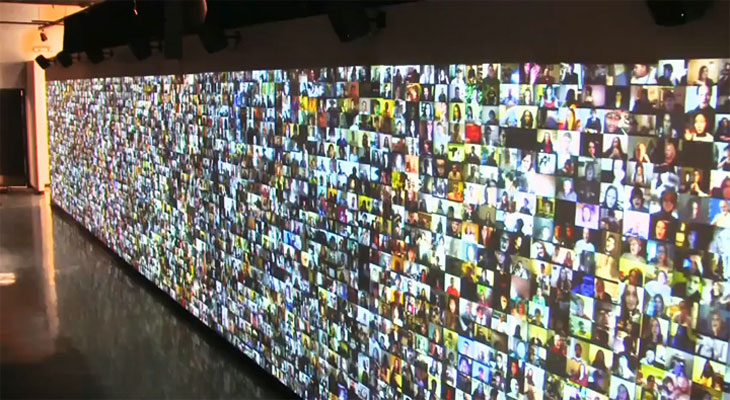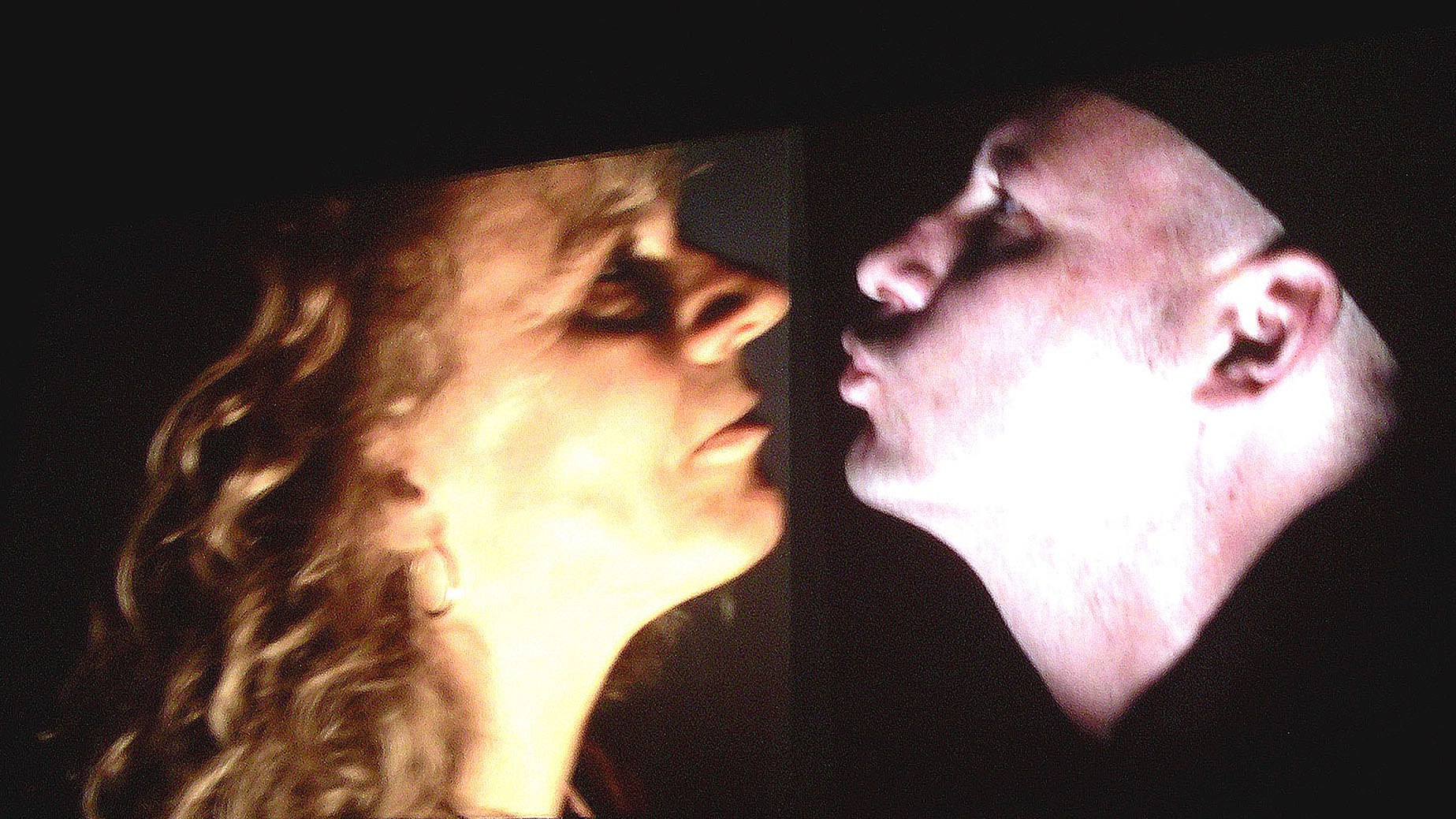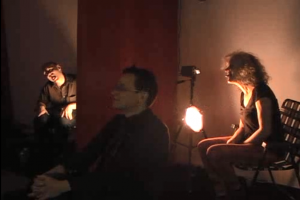Hyperessay
The third space network is a live video broadcast, which focus on broadcasting creative dialogue all over the world.
At the start, what becomes prominent in the broadcast is the various technical issues that appear in the broadcast. Glitches with the sound system, where the poor keynote speaker could not hear everyone else. Glitches in film, where the video would pause but the sound would run on. The speakers would sometime speak out of the microphone and no one can hear them. The intresting thing is how people adapt and make do in this highly connected world, where something goes wrong, there are a few other devices that can be made use of to keep the symposium afloat.

(An image of the group chat slightly after the first symposium started. The Key note speaker could not hear anyone speaking, so cues were given through the group chat.)
Day 1, 29 March 2018, 8pm-11pm
The first day starts of with Keynote speaker Dr Maria Chatzichristodoulou who talked about the telematics art.
From Google, the definition of Telematic is the branch of information technology which deals with the long-distance transmission of computerized information. More simply put Dr Chatzichistodoulo describes Telematic to be live/liveness and interactivity.
She says, ” It transform the screen into a live encounter, in that sense it joins the space of the live performance and the audience, making them co-performers.”
This ability to link people in real time, gives the audience, once only silent witnesses to an art form, a chance to interject their opinions and ideas into the work, influencing the views of their fellow audience, and sometimes the work itself. In a way this form of art embraces the connection between interaction and the media. Once, the media had only carried the recordings of art works. The media then could not influence the its audience in that contemporary moment and time, however, through telematics communication technology, everything is brought into the now, no matter where you are, so long as there is a screen before you.

(Source taken from: http://www.medienkunstnetz.de/works/hole-in-space/)
Dr Chatzichristodoulou brings in works like ‘Hole in Space’ by Kit Galloway and Sherrie Rabinowitz, to emphasis the potential that interactivity gives performance art. As we explored in a previous essay, ‘Hole in Space’ is a satelite connected projection of two areas in USA, one in Los Angeles and the other in New York City. The projection had first invoked curosity from the people of these separate states, before they started to make use of the opportunity to ‘meet’ each other, on screen for the first time in many years, for some. It creates a sort of unpredictability as various people come together with different intentions in mind. As such this experience, would result in very different reactions which creates a unique shared experience and can influence the audience better as it involves them.

(Screen shot of Dr Maria Chatzichristodoulou explaining the work ‘Telematic Dreaming’)
Subsequently she mentions this work ‘Telematic Dreaming’ by Paul Sermon. ‘Telematic Dreaming’ is done in two locations, the first with the artist and the other location has the audience. The work features a projection on a bed, and the audience and the artist can interact with each other on the bed through this live video projection. What was interesting about this work was a scenario Dr Chatzichristodoulou had pointed out, where a memeber of the audience had abused the artist projection on the bed. Dr Chatzichristodoulou had then begun to question the idea of ethics of such actions, whether this abuse would be considered as such, just because the artist was not physically harmed.
It made me consider the power of the third space. How in this day and age, how millenials spend so much time on the third space that it almost seem as though we could be physically in it. This kind of abuse, we label it as Cyber bullying, where one would spout or post various threats online to ‘hurt’ others but not really.
Subsequently, Annie Abrahams had done a live performance. she had collabed with a few other people who were from different parts on the world, relating to the idea of politics.





What i fould most interesting was the various voices and statements that were said, “excellent”, “status”, “3.961”, “144”, “excellent” “300,000 milliseconds”, it is like a computer comming online. Also, alongside the various images above, they would say various sentences, that they believe were something related to politics. It just brings across the point that in this day and age, it is so easy to connect and bring people of various backgrounds together to collaborate and make art.
Day 2, 30 April 2018, 8pm-11pm
The speaker Matt Adam’s had spoken of Blast Theory. Blast Theory is a pioneering artist group creating interactive art to explore social and political questions, placing audience members at the centre of their work.

(screenshot of Matt Adams explaining ‘Kidnap’)
His First example was ‘Kidnap’ which revolves around two voluntary members of the public winning a lottery to be “kidnapped’. Subsequently they were kidnapped and taken away to a safe house for 48 hours, with the video recording streaming them live for the entire 48 hours.
“Once you put on the bag, it feels very real” says one of the volunteers, “Like you are not in control of anything.” and it is true to an extent, handing all control to strangers, and trusting that everything is an act, when they do actually have the ability to make you feel vulnerable, to harm you.

(Screenshot of Matt Adams explaining ‘Uncle Roy’)
Subsequently there is ‘Uncle Roy’ which has two roles to play, the first being the people off the street with only 60 minutes to find the missing uncle Roy, through clues provided by a hand held computer. The second being the people online, whom can moniter the progress of the street player, and guide them by giving them instructions to where uncle Roy could be.
It brings across this idea of team work, and bring people of different communities together. It is almost as though they looking for Uncle Roy together in the same place. In the end they were made to answer a few questions regarding stranges, ‘whether they would help a stranger in a crisis’. I find this quite interesting, as it does reflect how connected the person is to society, how willing they are to help each other. It makes me realised sometimes, despite being so well connected, and willing to connect with strangers online, it makes some people reserved when meeting face to face.
Conclusion:
I feel that the idea of collaborating with others through online platforms has a larger potential to influence more people across various countries, so long they have the internet. The third space, that we have constantly talked about also has a various platforms and tools that can be explored to make art works more engagine and interactive. We consider them playful, and almost whimsical as collaboraters can create contrasting images, or interact in a certain way that goes beyond the boundaries of the physical plane.













 (Source taken from: http://kmccarth.umwblogs.org/2015/01/26/nam-june-paik/)
(Source taken from: http://kmccarth.umwblogs.org/2015/01/26/nam-june-paik/)